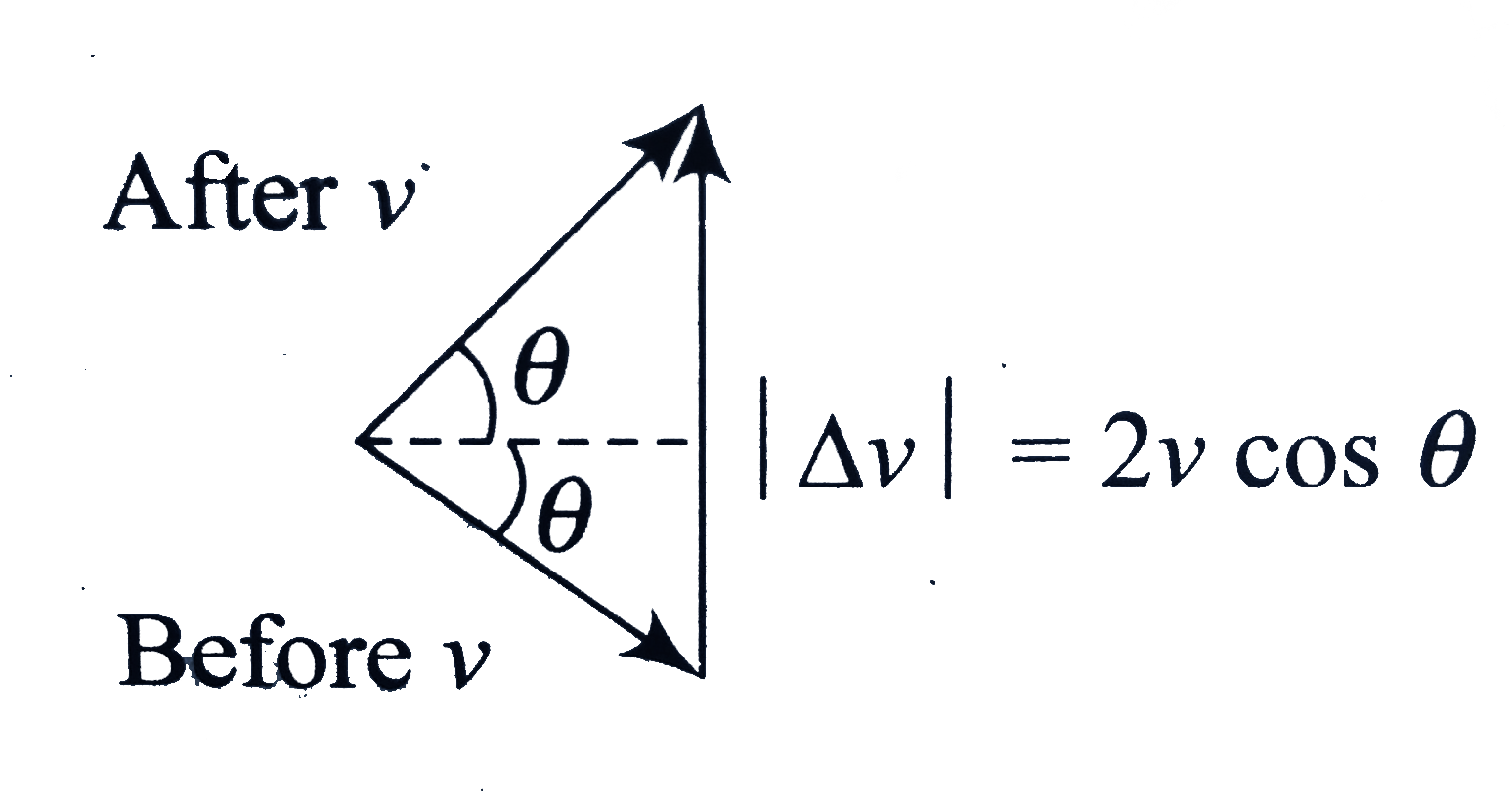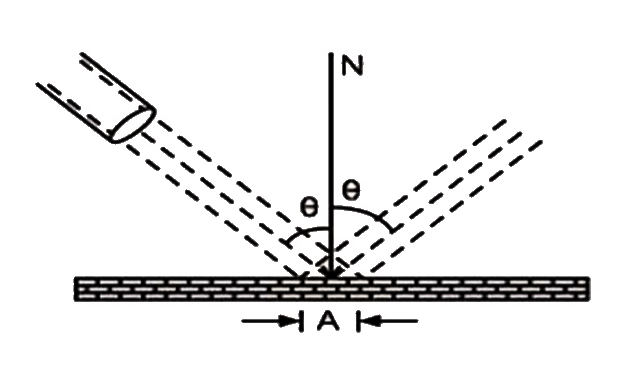 ltBRgt A nozzle throws a stream of gas against a wall with a velocity v much larger than the thermal agitation of the molecules. The wall deflects the molecules without changing the magnitude of their velocity. Also, assume that the force exerted on the wall by the molecules is perpendicular to the wall. (This is not strictly true of a rough wall). Find the force exerted on the wall
ltBRgt A nozzle throws a stream of gas against a wall with a velocity v much larger than the thermal agitation of the molecules. The wall deflects the molecules without changing the magnitude of their velocity. Also, assume that the force exerted on the wall by the molecules is perpendicular to the wall. (This is not strictly true of a rough wall). Find the force exerted on the wall
Anmv2cos2θ
2Anmv2cos2θ
2nmv2sin2θ
Anmv2cosθ
The correct Answer is:B

Since the molecules rebound from the wall, the component of velocity perpendicular to the wall is reversed, whole its velocity parallel to the wall does not change. The change is velocity of molecules is parallel to normal N. The magnitude of change is
|△→v|=2vcosθ
The change is momentum of a molecule is
|△→p|=m|△→v|=2mvcosθ
in the direction of normal N. Let n be the number of molecules per unit volume. The number of molecules arriving at an area A of the wall per unit time is the number in a slanted cylinder whose length is equal to the velocity v and whose cross section as Acosθ.
Number of molecules=n(Avcosθ)
Each molecule suffers a change of momentum 2mvcosθ.
Change of momentum of a steam of gas in a direction perpendicular to the wall is equal to (nAvcosθ)×(2mvcosθ)=2Anmv2cos2θ.
Hence, force exerted on stream of gas by the wall,
F=2Anmv2cos2θ
This is also the force exerted by gas molecules on the wall.
pressure=(normal force)/(Area)=FA=2nmv2cos2θ
Remark: for oblique incidence, the change in momentum of the radiation per unit volume at the perfectly reflecting surface is 2pcosθ and the corresponding radiation pressure is Prad=2pos2θ=2Ecos2θ
Topper's Solved these Questions
- PHOTOELECTRIC EFFECTBOOK - CENGAGE PHYSICSCHAPTER - PHOTOELECTRIC EFFECTEXERCISE - Multiple Correct
10 Videos
- PHOTOELECTRIC EFFECTBOOK - CENGAGE PHYSICSCHAPTER - PHOTOELECTRIC EFFECTEXERCISE - Linked Comprehension
44 Videos
- PHOTOELECTRIC EFFECTBOOK - CENGAGE PHYSICSCHAPTER - PHOTOELECTRIC EFFECTEXERCISE - Subjective
16 Videos
- NUCLEIBOOK - CENGAGE PHYSICSCHAPTER - NUCLEIEXERCISE - QUESTION BANK
59 Videos
- RAY OPTICSBOOK - CENGAGE PHYSICSCHAPTER - RAY OPTICSEXERCISE - DPP 1.6
12 Videos
Similar Questions
A nozzle throws a stream of gas against a wall with a velocity v much larger than the thermal agitation of the molecules. After collision of the molecules with wall the magnitude of their velocity remains same. Also assume that the force exerted on the wall by the molecule is perpendicular to wall. (This is not strictly true for a rough wall.) Find the pressure exerted on the wall. (n = number of molecules per unit volume, m = mass of a gas molecule)

View SolutionA nozzle throws a stream of gas against a wall with a velocity v much larger than the thermal agitation of the molecules. After collision of the molecules with wall the magnitude of their velocity remains same. Also assume that the force exerted on the wall by the molecule is perpendicular to wall. (This is not strictly true for a rough wall.) Find the pressure exerted on the wall. (n = number of molecules per unit volume, m = mass of a gas molecule)

View Solution
Knowledge Check
Attractive forces of cell walls for water molecules is termed as
AAdhesionBCohesionCOsmosisDPlasmolysisAttractive forces of cell walls for water molecules is termed as
AAdhesionBCohesionCOsmosisDPlasmolysisAttractive force of cell walls of xylem for water molecules is termed as
AAdhesionBCohesionCOsmosisDPlasmolysis
Attractive force of cell walls of xylem for water molecules is termed as
View SolutionThe pressure exerted on the walls of the container by a gas is due to the fact that the gas molecules
View SolutionA molecule of mass m moving at a velocity v impinges elastically on the wall at an angle a with the wall. Then
View SolutionIn kinetic theory of gases, a molecule of mass m of an ideal gas collides with a wall of vessel with velocity v. The change in the linear momentum of the molecule is
View SolutionIn turbulent flow the velocity of the liquid molecules in contact with the walls of the tube.
View Solution
